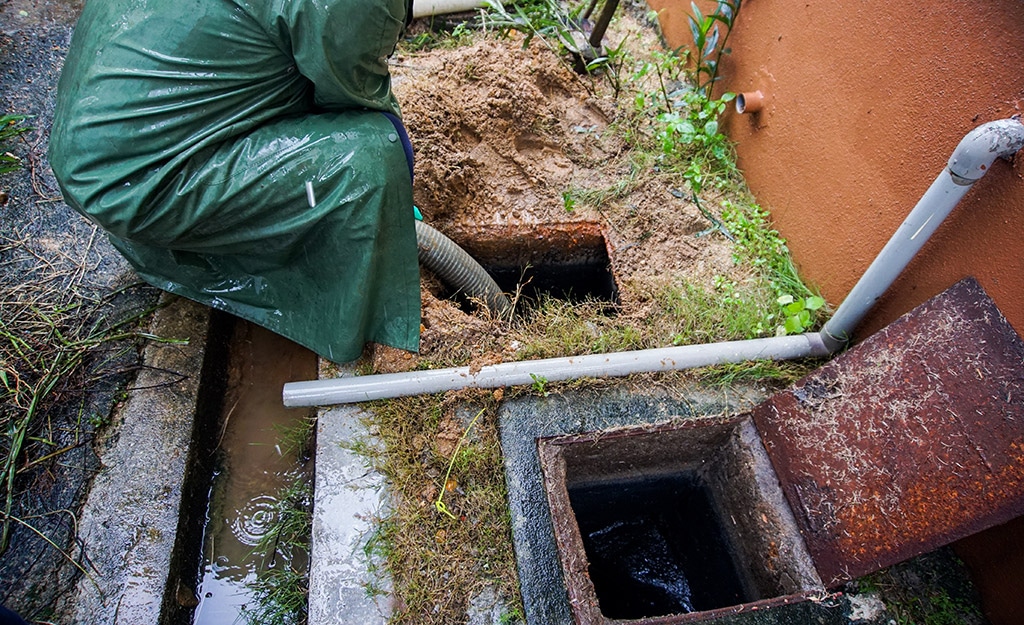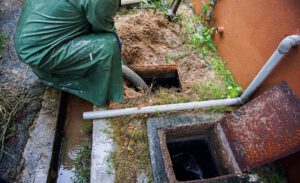Commercial Plumbing Aurora involves large-scale water supply and waste systems in buildings like offices, malls, schools, hospitals, etc. The plumbing systems have to abide by strict building codes and health regulations.
Repairing a leaky pipe in a residential property is fairly easy but it’s more challenging to find and fix the source of a problem in a commercial space. Also, commercial spaces have a higher number of people using their plumbing facilities.

A water supply line is a vital part of every plumbing system. It takes in freshwater from the public main water line and delivers it to faucets, toilets, showers, and other appliances throughout a building. Water supply lines should be sized and installed to handle the highest possible water usage. They should be made of durable materials and be well-maintained to avoid problems like clogs, leaks, or poor water pressure.
Commercial plumbing systems are much larger and more complex than residential ones. They can involve multiple stories, dozens of outlets and pipes, and a massive amount of fixtures. They also need to be designed for high water usage and be equipped with pressure-boosting systems. This is why it’s so important to hire a reputable, experienced contractor for your business’s plumbing needs.
In addition to the piping, a commercial plumbing system must have a robust drainage system to manage wastewater and prevent backups. It must also be able to accommodate different types of commercial fixtures, such as urinals and kitchen appliances, which require more powerful plumbing systems than standard toilets and sinks. Other specialized fixtures include water fountains, fire sprinklers, and commercial dishwashers.
Because commercial buildings have so many more people using their plumbing systems than residential ones, they experience greater wear and tear. This means they need more frequent maintenance and inspections. They also have to meet higher local and state plumbing codes.
A top-notch commercial plumber will have extensive experience working on complex systems in a wide range of industries. They will be familiar with the specific needs of each industry and know how to optimize the plumbing system to meet those needs. This can save your business a lot of money in the long run and ensure the safety of everyone who uses your facilities.
When you choose a commercial plumber, make sure they are licensed and insured. Check their reputation online and ask for references. You should also make sure the company offers comprehensive services, such as repairs, installations, and maintenance. Finally, make sure the company offers emergency services and has a good track record handling urgent issues.
Wastewater Disposal
Water is essential for human life, but wastewater disposal must be done properly to prevent environmental pollution. Commercial plumbing technicians work on the systems that manage water flows, including both freshwater coming into buildings and wastewater going out.
Domestic and industrial wastewater are a combination of different liquid wastes, such as faeces, food scraps, and chemicals from personal hygiene products, cleaners, and medicines. These wastes contain organic material and bacteria, which can be harmful if not treated correctly.
The wastewater treatment process includes two main stages: primary and secondary treatments. The former involves physical processes like screening and sedimentation to remove large debris and contaminants from the sewage. Secondary treatment uses aerobic and anaerobic microorganisms to break down the organic material and remove bacteria. The final product is called bio-solids, which can be reused in gardens and farms or converted to energy through methane gas fermentation.
Industrial wastewater requires more specialized treatment because of the high concentrations of toxins and heavy metals. These chemicals are a result of manufacturing, mining, and other industries. They are often toxic to humans and aquatic life, radioactive, or corrosive and can interact with disinfectants at drinking water plants to form cancer-causing substances. Industrial wastes also include byproducts of the production process such as oils, solvents, and sludges.
In most towns and cities, wastewater is collected in sewerage systems and delivered to a centralized treatment plant or wastewater reclamation facility. This is important because it allows for efficient collection and treatment of wastewater, preventing the contamination of nearby water bodies.
For smaller communities and homes, onsite wastewater treatment is an option. These systems typically consist of septic tanks and a drain field that allow wastewater to seep into the soil, avoiding groundwater contamination. Cesspools are a type of onsite wastewater system, but they are less effective than septic tanks and can leak into the surrounding groundwater.
Most onsite wastewater treatment systems use a combination of physical and chemical processes to treat the liquid wastes. The treated wastewater is then disposed of, either by discharge into rivers or lakes, for use in irrigation, or for industrial processing. Discharge into natural waters is a common practice, but it can have significant ecological impacts if not managed properly.
Gas Lines
Gas lines are an integral part of commercial property and need to be properly maintained. Proper installation and regular inspections can help ensure that business operations are efficient and that customers and employees are safe. Proper gas line maintenance can also help reduce carbon emissions and contribute to a greener future.
There are a number of factors that can impact the cost of installing or replacing gas lines on a commercial property. One key factor is the type of pipe used, as different pipes offer different benefits in terms of durability, efficiency, and price. For example, steel pipes are robust and long-lasting, but they may also be more expensive than copper or flexible piping.
Other considerations include the complexity of the project and any potential obstacles that may need to be navigated. For example, underground installations require careful excavation to avoid damaging existing utility lines or structures. Also, the size and length of the gas line may impact installation costs, as larger or longer lines typically require more materials and labor to run.
Moreover, there are various other costs associated with gas line maintenance and repair services. For example, if there is a leak in the gas line, it will need to be repaired promptly to avoid potential safety hazards and costly repairs down the road. Also, routine inspections can help businesses identify and address minor issues before they become major problems.
Another important aspect of gas line maintenance is ensuring that all connections are secure and tight. Over time, loose or improper connections can lead to gas leaks and inefficient operation of appliances. This is why it is crucial to invest in professional-grade maintenance and repair services.
Businesses can mitigate many of these costs by investing in proper planning and budgeting for gas line projects. Consulting with experienced professionals can provide valuable insights into average installation and repair costs based on the unique needs of a particular business. In addition, customized inspections can help businesses accurately assess their potential costs and anticipate any unforeseen expenses that may arise during the execution phase of a complex project.
Drain Cleaning
Drain cleaning is the process of removing blockages and maintaining healthy plumbing systems. Regular cleanings are essential for keeping water flowing smoothly and preventing costly repairs. Professional plumbers use a variety of methods for drain cleaning, including mechanical drain snakes, hydro jetting, and eco-friendly enzyme cleaners. Regular drain cleaning also prevents bad odors and improves the overall health of your home.
Clogged drains and sewer backups can lead to contaminated water that may affect local bodies of water. Proper drain cleaning and maintenance can help keep harmful bacteria, chemicals, and other pollutants from contaminating groundwater and public water supplies.
Commercial drains are more complex than residential pipes and have a higher risk of damage. Because of this, a commercial plumbing system requires regular drain cleaning services to avoid serious problems down the road. For example, a clogged drain line in a high-rise building could affect every floor and cause flooding and other issues for the offices and businesses below it. Commercial plumbers are able to identify and repair these issues more quickly because they have a better understanding of the entire plumbing system.
In addition to drain cleaning, commercial plumbing involves installing and repairing a wide range of other equipment. This includes installing and repairing kitchen appliances, bathroom fixtures, water heaters, sprinkler systems, and more. By using their knowledge of the latest equipment and tools, commercial plumbers can provide customers with efficient and effective service.
Commercial plumbing is a critical part of our daily lives. Without it, we would be unable to bathe, wash dishes, and clean ourselves. As such, it’s important to have the best plumbing possible for our homes and business. Professional plumbers are trained technicians who use problem-solving and people skills to ensure that their clients receive the highest quality plumbing services.
Every plumbing system is prone to wear and tear over time, so it’s important to have professional drain cleaning and maintenance services to keep them working properly. Professional plumbers can help with all types of drains, from toilets and bathtubs to sinks and urinals. They can even inspect and repair sewer lines to prevent backflows. With their experience and training, they can help you keep your drains clear and running smoothly for years to come.


